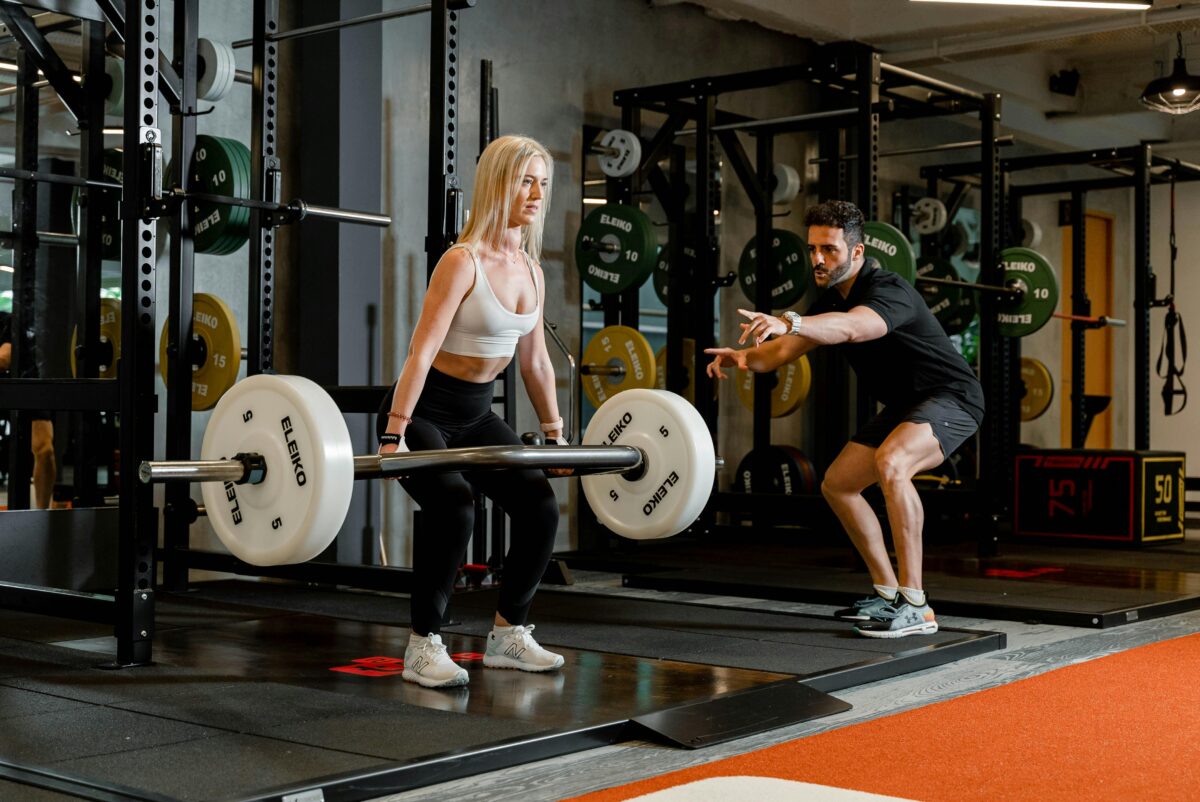How to perform a Deadlift

The Deadlift is an integral, yet often missing component of a strength building program. That’s not to say that everyone should be performing this movement or one of its variations, but the benefits of the Deadlift for a power or strength building program are innumerable.
What is a deadlift?
The deadlift is a compound movement that works grip strength with the erector spinae, gluteus maximus, adductor magnus, hamstrings, and quadriceps serving as the primary muscles. The remaining muscles are involved in stability control. It is, in a sense, the purest test of strength because it is one of the few lifts of dead weight (weight lying on the ground). In most other lifts there is an eccentric (lowering the weight) phase followed by the concentric (lifting the weight) phase. The eccentric phase essentially stores some amount of energy in the stretched muscles and tendons, making the concentric phase somewhat easier. The deadlift, however, is solely a concentric movement. The lift begins at its most difficult point, with no inertia or stored energy.
Deadlifts build back strength. Deadlifts teach you to keep your lower back rigid against a load. Keeping your back straight is critical to avoid injuries when lifting heavy objects from the floor.
There are also many various types of deadlifts which are good for putting more or less emphasis on the various muscles that you would use in a normal deadlift For example: Romanian deadlift, Sumo deadlift, Stiff leg deadlifts, Suitcase deadlifts
Deadlift benefits:
- To build strength and enhance power potential
- To add muscle mass to the entire body
- Develop core strength and rigidity
- Injury prevention, in everyday life you have to pick things off the floor
- Support grip strength
- The release of testosterone and growth hormone. ( help increase muscle gains)
Muscles worked
Since the deadlift is a compound movement it utilizes nearly every major muscle of your body:
Lower Back ,Calves, Forearms, Glutes, Hamstrings, Lats, Middle Back, Quadriceps, Traps, Deltoids
Dangers of having poor technique
Improper form (not maintaining a neutral spine) can precipitate new conditions, aggravate existing ones, and possibly cause injury, especially the heavier the weight one lifts. Failure to maintain neutral spine, primary job of the back muscles, during the movement causes undue stress to the spinal discs, by pinching the front and leaving a gap at the back, forcing the internal fluids to compress towards the back, and potentially causing a herniated disc. This is especially true of the lumbar region of the spine, which bears the bulk of the compressive forces on the upper body.
In addition, the compression can squeeze the spinal roots of the spinal cord, causing nerve-conditions like lumbago or sciatica.
It is important that those executing a deadlift be proficient in the recruitment (voluntary activation) of the deep abdominal and trunk muscles. In particular, it has been suggested that recruiting the transversus abdominus muscle provides a natural corset-like brace around the trunk, helping to protect against injury. A good method to help achieve this and avoid lower back injuries is to keep the abdominals braced. This will build anterior support for the spine. However, as a cautionary note, this technique can drastically increase blood pressure during the exercise and should not be performed by people with known or suspected heart conditions.
Using an underhand grip is potentially hazardous on heavy deadlifts as a supinated grip shortens the biceps muscle and increases the load on it, possibly leading to a rupture of the muscle or connecting tendons. The risk is most notable in individuals without full flexibility in the elbow joint. However, using an over-under grip allows one to lift more weight due to the reduced chance of the weight falling out of one’s hands.